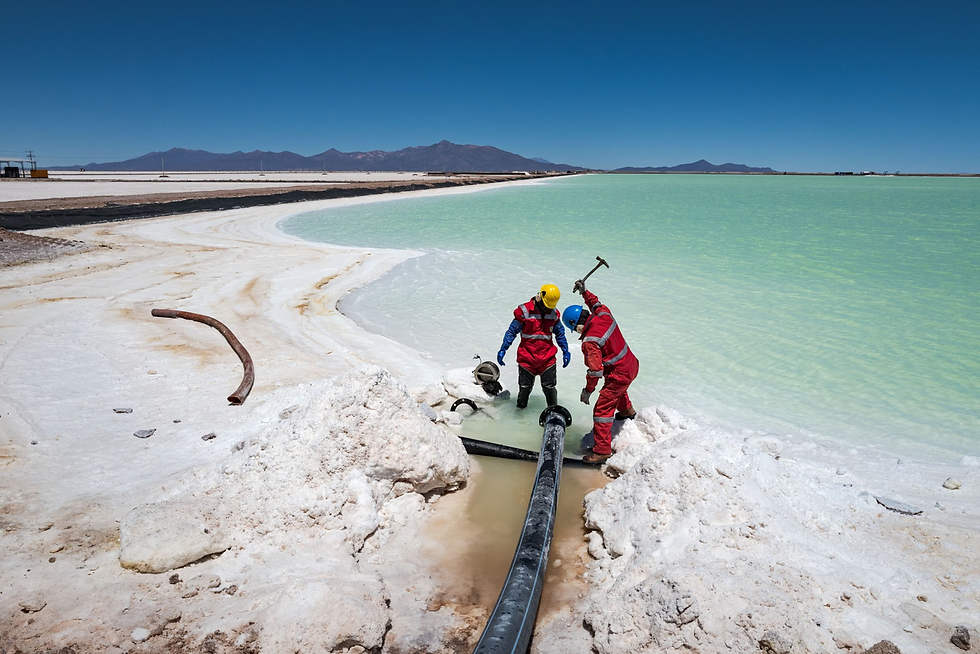Hydroponics: Shaping the Future of Farming
- TechTrek Admin

- Jun 4
- 3 min read
By Gabriel Vermut,
Physics and Aerospace Columnist; The Lawrenceville School, NJ
Hydroponics are a highly debated alternative form of agriculture in which plants grow without soil. The systems allow for an effective use of inputs by delivering the nutrient-rich solution directly to plant roots containing nitrogen, phosphorus, and potassium. As such, it holds a lot of promise in ensuring food production, particularly in areas with limited resources/limited water supply and land area.
One of the biggest advantages of hydroponic systems is their efficiency in water use. Traditional methods of farming can waste quite a bit of water with great quantities lost to evaporation and runoff. Hydroponics, on the other hand, works by recycling water and nutrients within a closed-loop system. This approach can result in water savings as high as 90% compared to conventional soil-based agriculture (Rajaseger et al., 2023). Such efficiency makes hydroponics an attractive option in regions that are suffering from water shortages.

The most important growth factor for plants is lighting, especially indoors in hydroponics. More recently, advancements in LED technology have created a closer relationship to the natural sunlight spectrum. These new LED grow lights can change the colors of light they produce depending on how they want the plant to grow, enabling growers to adjust the lighting according to the different growth stages for better health and output of the plant.
Most of the new hydroponic systems are integrated with renewable sources of energy for added sustainability. This would, in turn, lower the rate of greenhouse gas emissions and dependence on fossil fuels by using hydroponic farms powered by solar, wind, or geothermal energy. Integration will make such systems more environment-friendly and also possibly bring cost benefits in the future.

The integration of intelligent technologies within hydroponics has led to the invention of automated systems enabling the monitoring and controlling of different environmental variables. Sensors connected to IoT would track factors such as pH levels, temperature, humidity, and nutrient concentration in real time (Austria et al., 2023). The sensors bring about automated adjustments that create optimal conditions, reduce labor, and subsequently minimize waste of resources.
Traditional hydroponics still employ substrates for mechanical support of plants. Recent technologies have introduced newer substrate materials capable of sustainable options: foam substrates. Essential in their makeup, hydroponics are just some of the newer characteristics that fit into both amateur and professional contexts.
Certain remarkable projects, as seen with Science Barge of New York or Nemo's Garden in Italy, are bringing fantastic concepts of eco-sustainable systems by using hydroponics. The Science Barge is a floating urban farm powered by hydroponics, solar panels, wind turbines, and biofuels (Wikimedia Foundation, 2024). The barge is more of an educational tool that can show how to grow food in an urban environment in a very sustainable manner. Nemo's Garden does things a bit differently, growing their plants in underwater biospheres and taking advantage of stable temperatures and high humidity for an ideal environment to grow their plants (Wikimedia Foundation, 2023). These initiatives demonstrate the adaptability and versatility of hydroponic systems to suit different environments.

Although hydroponics have many benefits, hydroponic systems have their downsides, including high initial investment costs and a need for technical expertise. Continuing research is, therefore, aimed at solving some of these challenges through the introduction of cheaper methodologies and user-friendly technologies. With more development taking place, it is no doubt that hydroponics will surely form part of future sustainable agriculture in novel manners of meeting the increasing global demand for food with minimal environmental degradations.
----Works Cited
Admin. (2023, August 25). Innovations in hydroponics: A deep dive into emerging technologies: Greenhouse Automation Systems. Climate Control Systems. https://climatecontrol.com/innovations-in-hydroponics-a-deep-dive-into-emerging-technologies/
Austria, A. C. H., Fabros, J. S., Sumilang, K. R. G., Bernardino, J., & Doctor, A. C. (2023, May 2). Development of IOT smart greenhouse system for hydroponic gardens. arXiv.org. https://arxiv.org/abs/2305.01189
Rajaseger, G., Chan, K. L., Yee Tan, K., Ramasamy, S., Khin, M. C., Amaladoss, A., & Kadamb Haribhai, P. (2023, September 30). Hydroponics: Current trends in sustainable crop production. Bioinformation. https://pmc.ncbi.nlm.nih.gov/articles/PMC10625363/#:~:text=Hydroponic%20farming%20techniques%20have%20been,promoting%20sustainability%20and%20minimizing%20waste.
Wikimedia Foundation. (2023, December 31). Nemo’s garden (noli). Wikipedia. https://en.wikipedia.org/wiki/Nemo%27s_Garden_%28Noli%29
Wikimedia Foundation. (2024, April 27). Science barge. Wikipedia. https://en.wikipedia.org/wiki/Science_Barge
%202_e.png)





Comments